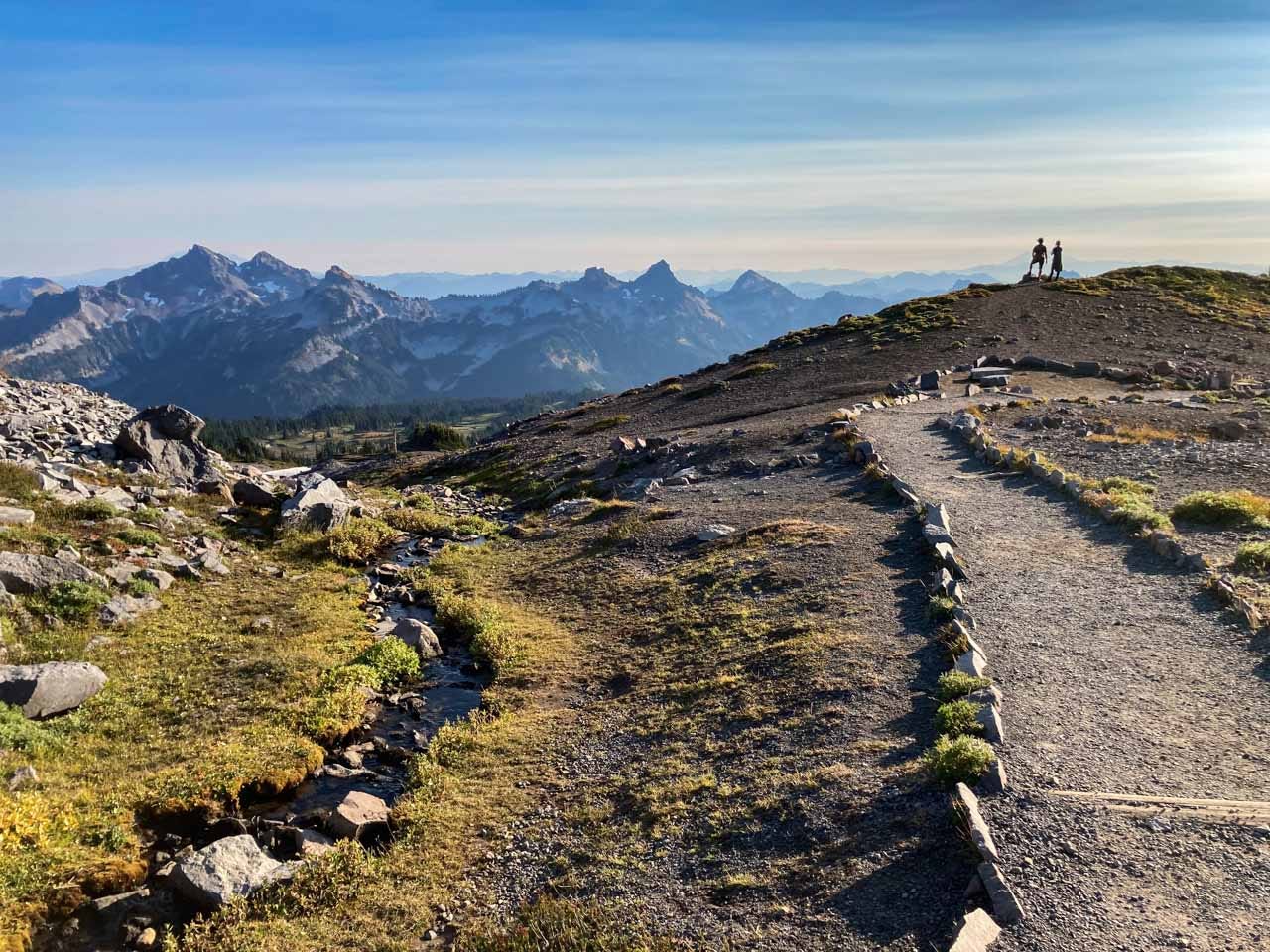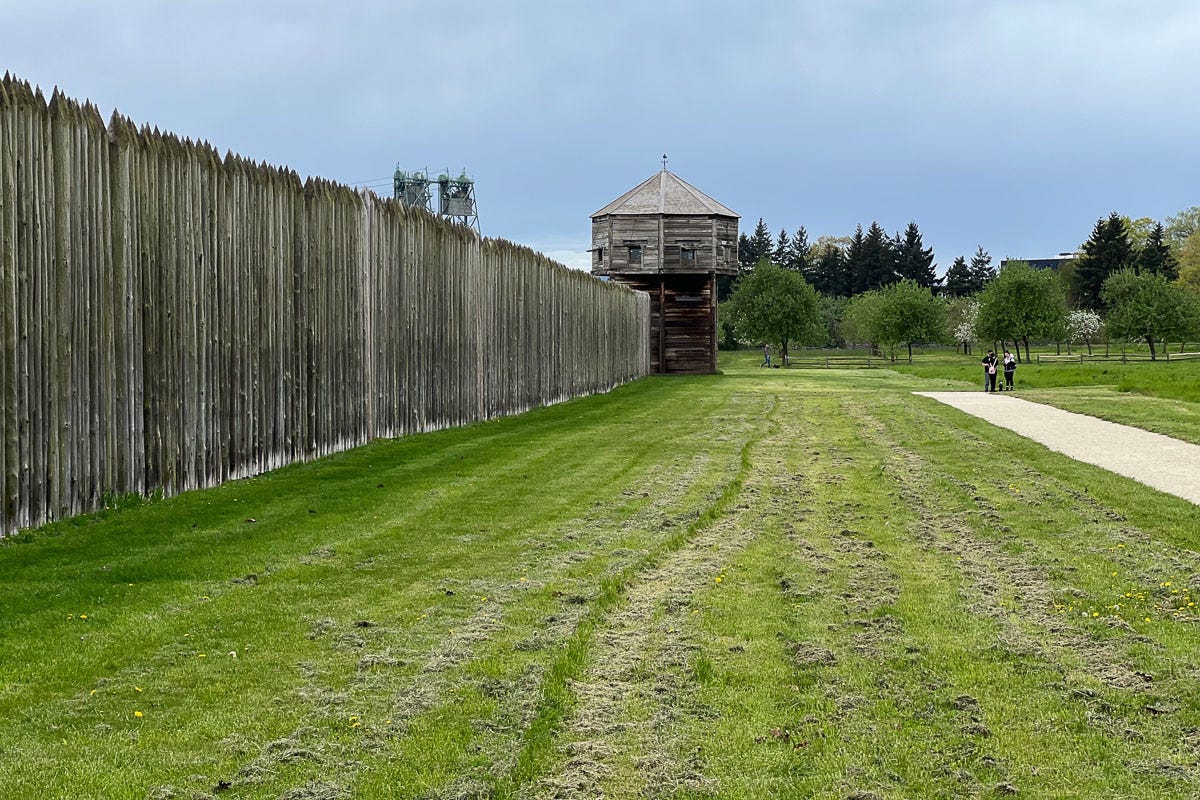The Fight For Our Parks: Why Visiting National Parks This Summer Is a Civic Duty
A visit to a park is a vote for that park.
As another American summer dawns, so does the promise of wide-open skies, trails through whispering forests and across wildflower meadows, and the call of wild places where history, nature, and spirit meet.
For over 150 years, our national parks and public lands have stood as testament to the idea that some places should belong to everyone—unbought, unspoiled, and unmarred by time. But this summer, these shared treasures are at a crossroads.
The current administration’s plans to cut funding and reduce staffing at the National Park Service (NPS) threaten not just operational logistics, but the very idea that parks are sacred spaces for all Americans, regardless of class, background, or political leaning.
Visiting these parks this summer is not just a vacation. It's a vote of confidence in their value, a stand against neglect, and a quiet act of resistance.
It’s a chance—in the case of some parks, possibly the very last chance—to visit them as NPS sites. Visiting the parks this summer is an opportunity to show that Woody Guthrie’s lyrics still mean something. That they still resonate among the general American public.
“This land is your land, this land is my land
From California to the New York island,
From the redwood forest to the Gulf Stream waters;
This land was made for you and me.”
- Woodie Guthrie

More Than Scenic Beauty: The National Parks As A Democratic Ideal
The American national park system was born out of a radical democratic vision. When Congress established Yellowstone in 1872, it broke with precedent by setting aside land for public use rather than private exploitation. It was a bold assertion: the nation's most extraordinary places would be preserved not as playgrounds for the elite or resources to be mined, but as sanctuaries for all.
This philosophy—unlike anything seen in Europe—infused the park idea with social significance. These weren’t simply reserves of natural splendor; they were civic institutions as crucial to national life as public libraries or free schools.
As historian Richard Sellars notes in his definitive work, Preserving Nature in the National Parks, the roots of the movement lay in both scientific interest and public accessibility. Preservation and people were intertwined from the start.
Congress established these parks to protect natural grandeur, yes, but also to invite Americans into landscapes that might otherwise be lost to industry or development.
As early as the late 19th century, parks like Sequoia, Yosemite, and Mount Rainier were conceived as vast preserves—not only for scenery and science, but for recreation, restoration, and pride.

A Legacy of Paradox: Conservation vs. Access
Yet from the beginning, national parks wrestled with paradox. Could natural beauty be preserved if opened to the masses? Would increased tourism compromise the very wilderness it sought to celebrate? These questions are just as relevant today.
John Muir, perhaps the most influential voice in early conservation, grappled with this tension.
He staunchly opposed the damming of Yosemite’s Hetch Hetchy Valley, while also desiring to keep the valley wild and free from roads and development. This—and the relative inaccessibility of Hetch Hetchy—ultimately meant that it had “less” recreational and economical value than nearby Yosemite Valley.
Hetch Hetchy was dammed and flooded in 1923.
While fighting for wilderness, John Muir simultaneously understood that exposure brought empathy. He knew that when ordinary people walked among ancient trees and granite cathedrals, they became park advocates for life.
And without public backing and access, there could be no political will to protect wildlands from relentless commercial pressure.
Today, this delicate balance is under siege.
Fewer staff means less maintenance, education, and ecological management. Neglect—whether from budget cuts or political indifference—tips the scales toward degradation, not preservation.
The fewer people visit, the easier it becomes for lawmakers to argue these places are not worth the cost. In truth, they are priceless.
Why 2025 Is A Critical Year
The proposed reductions to NPS funding in 2025 could result in:
Decreased Visitor Safety: Fewer rangers mean slower response times to injuries, search and rescue emergencies, and natural hazards.
Crumbling Infrastructure: Trails, campgrounds, restrooms, and historic buildings may fall into disrepair or close entirely. (The NPS already has a deferred maintenance backlog of over $23 billion and little is being done to fix that.)
Ecological Decline: Wildlife protection, invasive species control, and wildfire mitigation rely on trained, full-time staff.
Cultural Erosion: Interpretive programming, tribal partnerships, and preservation of sacred Indigenous sites could be sidelined.
Many parks already operate with shoestring budgets.
Visiting these parks this summer sends a powerful message: we still care. Your presence supports local economies, generates fee-based revenue, and most importantly, keeps the national parks visible in the American consciousness.
Silence and disuse invite dismantling. Engagement ensures survival.
Interior Secretary Doug Burgum has made no effort to hide his intentions with our precious parks. Ever since his confirmation hearing, he’s referred to parks as “assets on a balance sheet.” As places to be, above all else, exploited commercially.
There’s been open talk about transferring—or let’s be clear, selling—several NPS sites to states or local governments.
In fact, the Interior Department’s Fiscal Year 206 Budget Request calls for a gigantic $900 cut to the operational budget of the NPS.
As I reported on before, this, in effect, would require the abolishment of at least 300 parks—and that’s a conservative estimate—which would quite literally decimate the National Park System.
That is why it matters that you visit the parks this summer.
And it’s even more important to visit the smaller, less-known park sites—“a battlefield site, someplace” as Burgum said condescendingly during a Congress hearing recently. Those are in the greatest danger of losing federal protection.

The Ripple Effects Of A Park Visit
When you visit a national park, you're doing far more than snapping a photo or pitching a tent. You're joining a legacy of civic participation. If a park charges one, your entrance fee helps fund preservation. Your voice contributes to a growing chorus that says: This is our shared inheritance, and we will not let it fade.
But the impact doesn’t stop at the park boundary. National parks generate more than $55 billion annually for gateway communities. Lodges, tour guides, outfitters, restaurants, gas stations, and Indigenous artisans all benefit.
Reducing park staff and access affects not only federal budgets but—especially—small towns across America, most of which are in Republican-leaning states.
And it’s not just about economics. A park visit has the power to awaken environmental awareness, instill national pride, and connect us to generations past.
Whether standing before a bison in Wind Cave National Park—at a safe distance, of course—or walking in the footsteps of Civil War soldiers at Shiloh, visitors encounter stories older and larger than themselves.
Wilderness Is For Everyone
Some people hesitate to visit parks because they feel they don’t “belong” in wild spaces. They worry they aren’t outdoorsy enough or don’t see themselves reflected in park media. This is a myth we must dismantle.
America’s parks were protected for everyone. This includes urban families seeking first-time camping trips, people with disabilities accessing boardwalk trails, and communities of color reclaiming space in lands they’ve long been excluded from.
Park accessibility has improved, but real inclusivity requires more outreach, more staffing, more programs—not less.
Ranger-led tours, community initiatives, and youth education can’t survive on volunteerism alone. They need federal support, and that begins with public demand.

History Lives Here, Too
It’s easy to associate national parks with natural wonders—towering redwoods, fountaining geysers, sprawling glacial valleys—but they also house some of the most important historic and cultural sites in the nation.
From the ancient cliff dwellings of Mesa Verde and the reconstructed wooden walls of Fort Vancouver to the sobering grounds of Manzanar and the preserved plantation ruins of Virgin Islands, our national parks are also museums of memory.
They chronicle Indigenous histories, immigrant experiences, civil rights battles, and environmental milestones.
Reduced budgets threaten not only physical upkeep but also interpretive efforts. Without educators and historians, we risk losing nuanced understandings of the past—and silencing voices already pushed to the margins.

Mental Health, Healing, And Hope
At a time when America is grappling with division, burnout, political tension, and disconnection, national parks offer a rare and vital medicine: awe.
Time in nature is scientifically proven to lower stress, increase creativity, and foster well-being. People heal among pines and peaks. Families reconnect around campfires. Strangers find community under the stars.
These are not luxuries. They are necessities for a balanced society.
If you’ve ever felt the peace of sunrise over the Grand Canyon, the serenity of a tidepool in Olympic, or the wind in the grasslands of the Badlands, you know this truth: some of the deepest truths about ourselves can only be found in wild places.

Five Things You Can Do This Summer
Visit a Smaller NPS Site
Especially the lesser-known sites—like Fossil Butte in Wyoming, Knife River Indian Villages in North Dakota, or Congaree in South Carolina—benefit the most from your support.Become a Citizen Advocate
Call or write to your members of Congress. Urge full funding for the National Park Service and the protection of public lands.Donate or Volunteer
Many parks have “Friends of…” organizations that fundraise, clean trails, or run educational programming.Practice and Promote Leave No Trace
Model responsible recreation. Pick up trash, stay on trails, respect wildlife, and teach others to do the same.Share Your Story
Social media can be a powerful amplifier. Show your network that national parks are worth exploring—and worth protecting.
A Nation’s Soul, Etched In Stone And Sky
What do national parks say about us as a country?
They proclaim that amid division, we can unite around something timeless. That freedom includes the freedom to roam in spaces of grandeur and silence. That justice includes preserving sacred Indigenous lands. That prosperity includes ensuring future generations inherit clean rivers, old forests, and intact stories.
In 1903, Theodore Roosevelt stood at the rim of the Grand Canyon and implored Americans: “Leave it as it is. You cannot improve upon it. The ages have been at work on it, and man can only mar it.”
Today, we echo that call—not just in words but in footsteps. By going to the parks, we declare that they are not relics, not political pawns, not luxuries. They are essential parts of our national fabric.
So this summer, go.
Go to a new park, explore a national seashore, see a memorial, road trip to a remote monument, tour an urban historic site, visit “a battlefield site, someplace.”
Bring your curiosity, your family, your patience. Bring your open mind, bring respect for wildlife, and bring a smile to a park ranger—and ask them how they’re doing.
Whether for an hour or a week, step into landscapes older than memory, explore historic sites and learn about America’s fascinating history. And when you leave, carry something with you—not just photos, but commitment.
Because when we stand with our parks, we stand with the best of what America can be.
After all, only an idiot would want to destroy “America’s best idea”—particularly if 2025 is another visitation-record-setting year.




